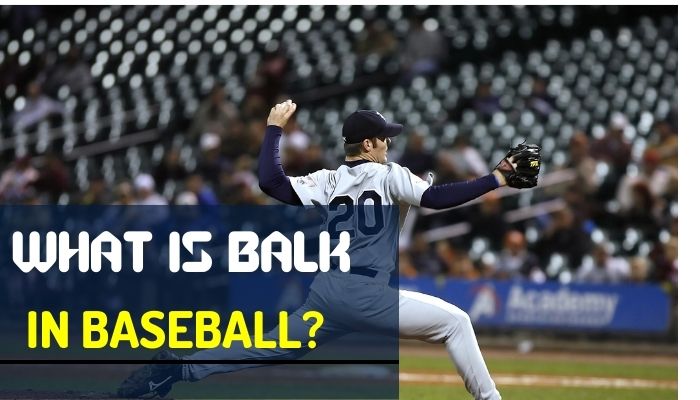What is a balk in baseball? Simply put, a balk is an illegal move by the pitcher that is prohibited by baseball rules.
Pitchers mostly pretend to be an illegal move when they have no intention of throwing the ball.
However, the umpire can call a balk when he notices the pitcher’s movement and consider it illegal regarding the official baseball rules.
However, many things must be clarified to know entirely about the balk. There are rules of balk as baseball is a game of rules. So, let’s know what causes a balk in baseball, the rules of balks, how many ways a pitcher can balk, ad so on.
What Is Balk in Baseball? : Official Definition

Figure 01-
As I have previously mentioned, a balk is a pitcher’s illegal movement or motion. And the movement will be illegal when if determined to be deceitful to the baserunner(s) by the umpire.
The consequences of the deceitful move result in a dead ball, called by the umpire. Also, the baserunner is awarded the advancement to the next base.
By the way, the batter on the home plate will not get any award for the balk.
The illegal movements come when the pitcher acts like he is going to pitch but has no intention to do so. Sometimes, a balk can be partially disregarded.
However, A balk is entirely an illegal act of a pitcher.
Baserunners get the award of next base advancement due to the balk.
The batter will remain on the plate with the previous count.
By the way, with only the definitions, a balk cannot be entirely described. Because there are many rules by which a pitch can be called a balk/dead ball.
By the way, though you might already have understood, the balk is a negative state for the pitcher. By the way, the balk phenomenon will surely help you to get refreshed overcoming the baseball boringness.
According to the official baseball rule book, the authority defines balk as follows.
“An illegal act by the pitcher with a runner or runners on base, entitling all runners to advance one base.”
Sometimes, a visual presentation is more than described in written form. So, the following video will help you understand how pitchers approach illegal moves that are considered and called balks.
Additional Read: What Is a Good ERA in Baseball? | Critical Facts Explained
What Causes a Balk in Baseball? : Rules of Balk/Action of Balk
Okay, now let’s talk about the balk actions. Several moves cause a balk. So, how do you make a balk if you are a pitcher? Let’s see some most common rules of balk in baseball.
1: Start Pitching Motion But Not Pitch/Flinching
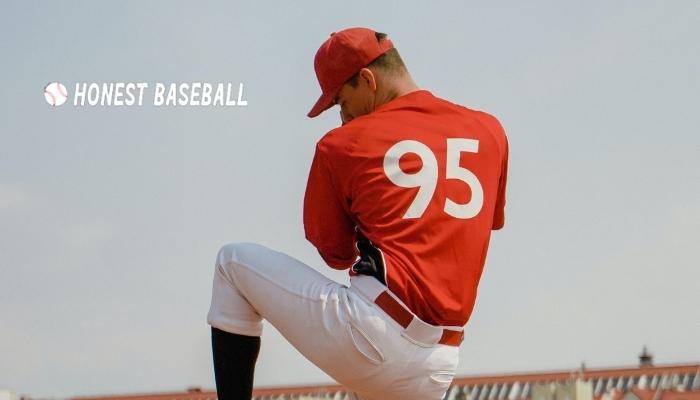
Imagine that you are just beginning the action of pitching. You are required to complete the pitching at the same time that you begin the action of throwing. Regardless of the cause, you are not allowed to stop throwing in this situation. If so, it will be called a balk.
This may happen if the pitcher begins the motion, but he wasn’t truly ready to throw yet when he actually started the motion. As a consequence of this, he may decide to quit.
Aside from this, the umpire can catch a pitcher in the cheating process by calling a balk if the pitcher flinches. The primary method pitchers use to approach the batter is flinching when in the stretch posture. There is also the possibility that the pitcher may trip, slide, or tumble to the ground.
The following video is a good example of flinching.
Flinching violates MLB rule 6.02(a)(1):
“The pitcher, while touching his plate, makes any motion naturally associated with his pitch and fails to make such delivery.”
2. Quick Pitch/ Not Coming to Set Position
You cannot throw a quick pitch before properly getting set, or the batter is not ready. It also can be called a quick pitch, as the pitch is thrown before the batter gets entirely ready.
So, if the umpire considers the pitcher pitches too early, it would be called a balk.
Here, the two rules of MLB are violated.
6.02(a)(5)- The pitcher makes an illegal pitch.
6.02(a)(13)- The pitcher delivers the pitch from Set Position without coming to a stop
Here is a video on quick pitch balk:
3. Fake Throw to the First Base
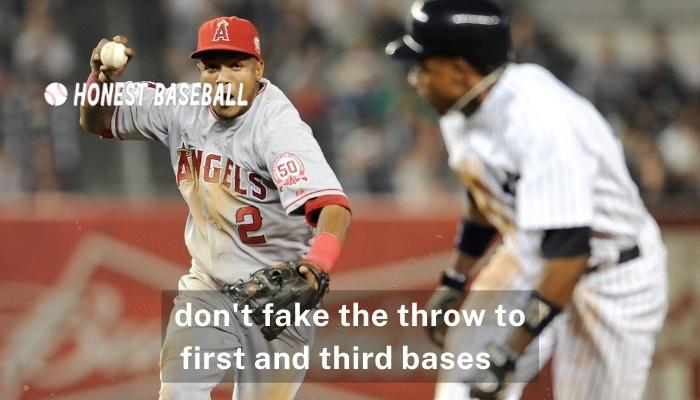
You cannot fake a throw to the first base. The rules are applied when the righties or lefties pick off performing moves to the first base but don’t step out from the rubber.
Let’s make things clarified.
For the righties, they can legally move to the first base after steeping out their back foot from the rubber. When he approaches the first base in this situation, he must throw the ball to the first base. Because it is considered a pick-off move.
Otherwise, this will be a fake approach and will be called a balk.
But, if the pitcher steps off the rubber, he can fake the throws in any direction if he wants.
On the other hand, for the lefties, the rule is the same.
So, If you step off the rubber, you can fake a throw. You cannot fake a throw before stepping off the rubber. It will be considered a balk.
Note: Faking a throw to the second base is legal by the way.
More Read with Different Topic: What Does WHIP Mean In Baseball? A Comprehensive Explanation
4. Faking a Throw to the Third Base
Before the start of the 2013 Major League Baseball season, it was only against the rules to fake a throw to first base. However, the pitcher was given permission to fake his way to third base. As a direct consequence of this, there were many discards.
By the way, this fake throw to third base was brought up in conversation quite a bit after some time. Players, coaches, and spectators all made their voices heard in protest of it. Because exposing the runners at the second base also included an element of deception.
As a direct consequence of this change, it is now against the rules to feign a throw to third base while starting Major League Baseball in 2013.
Faking a third base throw violates MLB rule 6.02(a)(2)-
The pitcher, while touching his plate, feints a throw to first or third base and fails to complete the throw.
By the way, faking a throw to third base is still legal in many amateur leagues and high school-level baseball.
Some examples of a balk by faking the third base:
5. Throwing or Faking to an Unoccupied Base
The idea is simple. You are not allowed to throw or fake a throw to an empty or unoccupied base if there is no baserunner present. You are nonetheless allowed to throw to a base toward which a runner is moving.
For instance, you cannot toss the ball to second base if the lone runner currently on the base is located at third. If the runner attempts to steal the base while you have stepped off the rubber, you can either throw the ball for a tag out or run out of the base.
Read More: What Does FPS Mean In Baseball?
6. No Step Forwarding Toward the Base
Sometimes, pitchers release the balls as quickly as possible. In this case, they often fail to step toward the base they are throwing the ball. When this scenario happens, it is called a balk by the umpire.
This phenomenon violates MLB rule 6.02(a)(3)-
The pitcher, while touching his plate, fails to step directly toward a base before throwing to that base.
See the following video to understand the phenomenon.
7. Pitcher Slips
Accident is a common phenomenon in baseball. As I have mentioned at the beginning, a pitcher could be slipped during the delivery and the delivery remains unpitched.
This also is called a balk. Even if the pitcher loses his balance during the pitching, it will also a called a balk.
This also violates MLB rules 6.02(a)(1).
Here is a slip balk of a pitcher.
8. Pitcher Winds Up but Not Deliver the Pitch
This also violates the same regulation of Major League Baseball that flinching and pitching do. At this point in the game, the pitcher starts to wind up, but he does not finish the pitch. However, in order to comply with the regulation, he is required to complete the pitching.
As a consequence of this, the movement in question is known as a balk.
Here is a failed attempt of pitching with windup:
9. Pitching without Not Facing the Batter
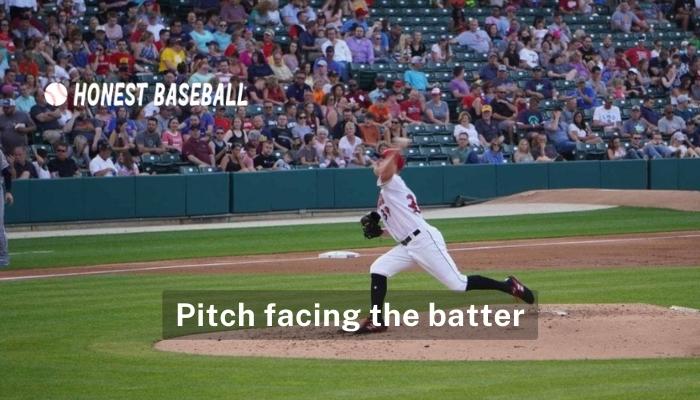
In the baseball rule book, there is a regulation that states the pitcher must face the hitter while throwing the ball. However, determining what the precise meaning of it is might be difficult.
I’m going to bet that nobody has ever experienced an umpire calling a balk on one of these rule infractions. By the way, I have a hypothesis on the visual condition of the rule, but I cannot confirm it.
What exactly does it mean to have a face? It ought to be the standard operating procedure for pitching. Since there was no such event involving a balk, we are able to argue that the typical pitching at the hitter while staring at his face should be this one.
The MLB rule 6.02(a)(6) says-
The pitcher delivers the ball to the batter while he is not facing the batter
10. Not Pitching on the Pitching Rubber
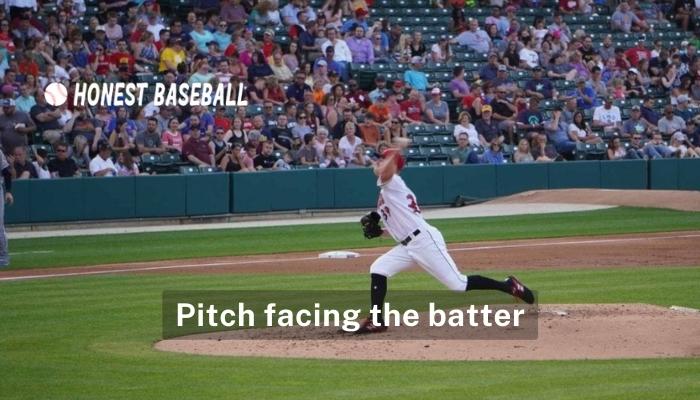
Pitching means you must pitch a ball while you are on the rubber. It is certain, that you cannot do so when you are not on the rubber.
This ensures that no pitchers can deceive the batter. As a direct consequence, you even cannot act like you are going to pitch a ball outside of the rubber. So, in this case, you must prevent your pitching motion while you are not on the rubber.
Otherwise, this will be called a balk by the umpire.
11. Game Delay
In the game of cricket, this rule is strictly followed. Here, if any of the team delays the game without any logical reasons, they are punished with a fine.
However, I have never experienced any pitcher ever delayed a baseball game during his pitching and calling a balk as a consequence.
By the way, the rule is on the MLB rule book as well. So, however, if you delay the game by any chance during pitching, you will be called a balk.
12. Ball Falling Out of the Pitchers’ Hand
As I have discussed before, accidents happen. What if you are on the pitching mound and the ball falls down of your hand? A quite normal thing, isn’t it?
But, actually not. It is a phenomenon to get a balk baseball which is one of the violations of baseball.
You cannot slip off the ball on the rubber to avoid a balk call. However, I personally don’t support this rule. It is actually pathetic. Even the unwilling fall of the ball on the rubber brings a punishment.
By the way, this phenomenon takes place according to baseball rule 6.02(a)(11)-
The pitcher, while touching his plate, accidentally or intentionally has the ball slip or fall out of his hand or glove.
See a pathetic falling balk in MLB:
13. Not Delivering the Ball When the Free Foot Moving Past the Back Edge of the Pitching Rubber
If your free foot moves beyond the edge of the pitching rubber, you are required to throw the pitch that you are holding. If not so, you will violate the baseball rule of 6.02(a)(1) and will call a balk.
To boil it all down, this kind of balk most frequently occurs in the minor league as a result of players’ lack of experience.
The only part of the pitcher that falls under this criteria is the base. Certainly not his knee.
The baseball rule 6.02(a)(1) Comment says-
“If a left-handed or right-handed pitcher swings his free foot past the back edge of the pitcher’s rubber, he is required to pitch to the batter except to throw to second base on a pick-off play”
14. Hand Separation (Not Allowed)
In this scenario, the pitcher’s hands are brought together as they go into the set position. There are two different approaches to use in order to separate the hands after they have joined together within the gloves.
Only by removing his foot off the throwing rubber is he able to disengage his hand. Once he has removed himself from the rubber, he is free to act in whatever manner he sees fit.
However, as his hands start to become tangled up in the glove again, he has to disentangle them by throwing the ball at the hitter. Otherwise, the umpire will refer to it as a balk.
15. Catcher’s Wrong Act
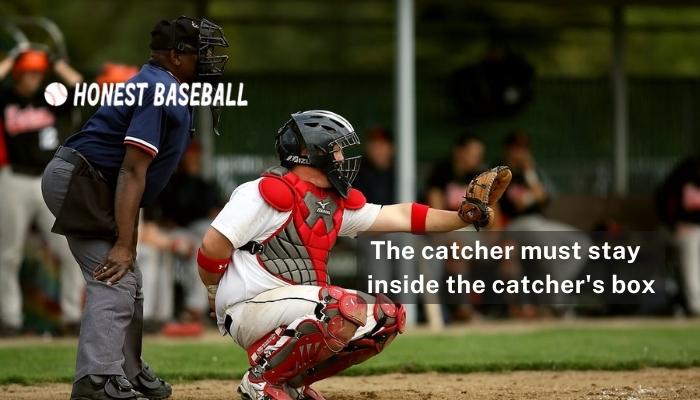
The only place the catcher is allowed to be is in the box where he catches the ball. Therefore, he is required to be at his designated spot behind the plate during pitching. Otherwise, the pitcher will be penalized with a balk if the catcher does not always remain in the area designated for catchers.
Origin of Balk in Baseball
In 1898, Major League Baseball adopted the balk, which was an illegal approach by the pitcher. It was implemented in order to prevent pitchers from intentionally misleading baserunners.
Before the balk was called, the pitchers were free to perform any kind of deceptive behavior they liked. As a direct consequence of this, the baserunner had, for the most part, been cautious while running the bases.
The rule was likewise rewritten the year after that, in the following year. As a result of the rule that was introduced, the pitcher is not allowed to fake pickoff throws.
Over the course of time, there were numerous alterations and adjustments made to the rules.
Some changes came to balk in different years. Among them, we can mention 1950, a963, and 1988.
1950: The MLB rules implemented a new rule. In this rule, the pitcher must stop for one second before delivering the pitch. Otherwise, it will be called a balk. This is for when the bases have baserunners.
1963: In spite of the fact that there were balk restrictions, the pitchers were not able to influence the game with their balks. Because of this, the authorities of MLB issued an order to all of the umpires instructing them to crack down on balks.
As a direct consequence of this, the umpires called twenty balks throughout the course of the first twenty games!
1988: In 1988, a big change came. The complete stop of one second is replaced with the “single complete and discernible stop.”
Balk Record for the MLB

Steve Carlton has amassed the most number of balks during his career in Major League Baseball (!). In his career, he has thrown 90 balks.
Dave Stewart holds the record for the highest number of balks in a single season. In 1988, he held the record for most balks committed in a single season with 16. During the time that he held the record, Stewart was a member of the Oakland Athletics.
On the other hand, Bob Shaw holds the record for the maximum number of balks in a single match. On May 4, 1963, he was playing in a Major League Baseball game against the Chicago Cubs when he balked five times. He was a member of the Milwaukee Braves and pitched for them.
It’s an interesting anecdote, but he committed four of the five balks that were called while Cubs’ Billy Williams was on base. The first one occurred in the opening frame of the game. And three on the bench to start the third inning.
In that order, Williams was given the bases of second, third, and home plate.
Despite this, it was determined that Bob Shaw’s objections had to do with the challenges posed by the new regulation.
Because umpires were told to strictly follow the one-second stop rule when the pitcher goes to set position from the stretch. Though the rule was not strictly followed before then.
Charlie Hough currently holds the record for the most amount of balks committed in an MLB exhibition game. This record does not include official MLB games. In only one inning, he was given seven balk calls. He required a complete set position not to be called a balk, but he was not in that position.
Historic Balks in the Major League Baseball
Many notable balk incidents happened in baseball history. All are not to be mentioned here. But, some are so significant that they demand to be mentioned. Let’s see some of them.
This incident was in the 1947’s Word Series. During the game between New York Yankees and Brooklyn Dodgers. Yankees pitcher Spec Shea dropped the ball while he was trying to pick off Jackie Robinson of the Dodgers.
At that moment, Robinson was positioned to bat first. The umpire ruled that he committed a balk when he failed to catch the ball after at least one further effort. Robinson was allowed to move up to second base as a reward.
One of the most famous balks in baseball history was called at the 1961 All-Star Game. It was a protest that was demanded by mother nature. A powerful wind was blowing, and as a result, pitcher Stu Miller was swaying in an erratic manner due to the wind.
However, as a result of this, the phenomenon came to be called a balk by the umpire.
By the way, it has come to my attention that this narrative has on occasion been elevated to the status of a myth or legend. Even if a lot of people are overzealous in saying that Miller was blown off the rubber because of the wind, he is still on the rubber.
I can think of another major error that affected the match’s outcome. On June 18, 2015, a game took place between the Texas Rangers and the Los Angeles Dodgers. The score was supposed to be about even. However, the occurrence took place in the last inning.
Enrique Hernández of the Dodgers was at third base when Rangers relief pitcher Keone Kela was penalized for a balk at him. This balk gave Texas the loss to the Rangers. What a paradox it was!
Last One
On the 14th of June, 2019, there was a deliberate attempt to win by balking. The Los Angeles Dodgers and the Chicago Cubs were the two teams competing in the game. When they were up 5-3 in the game, the closing pitcher Kenly Jansen committed an intentional balk.
At the same moment, the Cubs were in the ninth inning of the game and had two outs remaining. Just so you know, Jason Heyward is the baserunner for the Cubs and he’s on second base. It is possible for him to advance to third base. At this point, Jansen was deliberately being difficult.
The baserunner for the Cubs, Victor Caratini, stepped up to bat as the game’s last batter and struck out to record the game’s last out. After the game, the Los Angeles Dodgers emerged victorious.
The Intentional Balk
A pitcher’s intentional balk is a strategy that can be used by the pitcher. The strategy known as the intentional balk consists of the pitcher intentionally balking at the baserunner. It is done in order to guarantee that the baserunner can go from the second base to the third base.
The primary purpose of an intentional balk is to protect runners’ signs from being stolen by other players. The 1956 Claxton Shield event in Australia is credited with being the first time the concept of an intentional balk was used.
On the other hand, the idea came to Major League Baseball in 2019. As I mentioned already, the first ever intentional balk was used on June 15, 2019, by the closing pitcher Kenley Jansen of the Los Angeles Dodgers against the Chicago Cubs.
Kenly Jansen’s intentional balk.
Some Other Facts Regarding Balk
Fact 1
I have already discussed the balk that the catcher makes. However, the truth is that the catcher’s balk is not formally included as part of the official balk rule. It is used on occasion to characterize anything that is not normal.
In the end, the catcher must remain in the box behind the plate while the pitcher is throwing the ball. Otherwise, the pitcher will be penalized for committing a balk.
Because doing so is considered an unlawful activity for a pitcher to do in baseball, the rule book prohibits it (Though the mistake is from the catcher).
Fact 2
A pitcher doesn’t need to step off the pitching rubber when he wants to throw to an occupied base. It is when he is in a pick-off attempt.
From where he is now, he may choose between three different courses of action.
- It is possible for him to finish the pitch.
- Capable of throwing the ball to one of the bases.
- Taking a step away from the throwing rubber.
According to MLB legal pitching rules 5.07(a)-
There are two legal pitching positions, the Windup Position, and the Set Position, and either position may be used at any time. Pitchers shall take signs from the catcher while in contact with the pitcher’s plate.
Frequently Asked Questions
1. Is a Balk Considered an Error?
No, according to the rules, a balk is not the same as an error. Owing to the fact that it seems to be an error on the part of the pitcher in terms of doing the appropriate things. However, in accordance with the rules of baseball, a dead ball is considered to be the result of a balk.
In the event that there are runners already on the bases, a balk will result in each of those runners being awarded an extra base. A ball is what we shall refer to it as if it is not.
2. Can a Pitcher Balk From Windup?
A pitcher can pitch from the windup while there are no runners on bases. In such cases, the windup balks will be counted as balls. But, if the pitchers do so with runners on bases, he will be fined with a balk call.
Bottom Line
A balk is an illegal act by the pitcher to deceive the baserunners. As a result, the bulk rules were implemented in 1898 by MLB to prevent such deceiving activities.
However, more balk against a pitcher refers to more reward for the baserunners. Even if the baserunner is at the third base, a balk reward will bring a home run for the batting team.
By the way, I hope this comprehensive guide is capable of answering your question “what is a balk in baseball?”
You May Also Like:
What Is a Home Run In Baseball? 4 Drill for Home Runs
How Many Innings Are There In A Baseball Game (According To 2022)
Baseball Drills for 7 year olds | Coach Preferred
Why Is The American Flag Backwards On Baseball Uniforms? Explained
Pitching Drills For Accuracy |More Perfection

Hello everyone. My name is Jason Butler, and I live in California, America. I was a professional AAA Minor League Baseball player. I lost my chance of playing MLB for injury issues, but I did not lose my love for baseball. I attended the coaching training program and am now working as a coach in a small school in San Diego.
I always love to share my experience and knowledge if that can help you. Play baseball, and stay fit.
